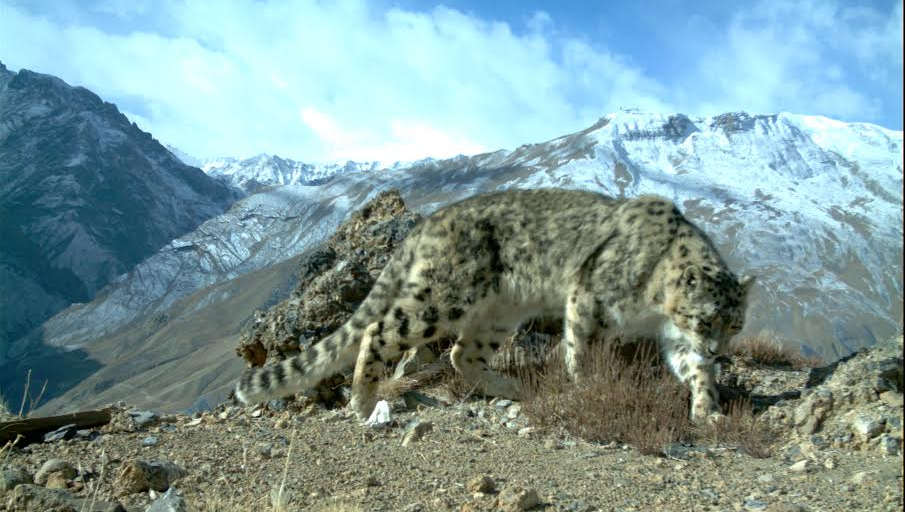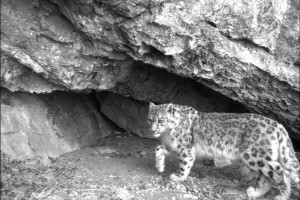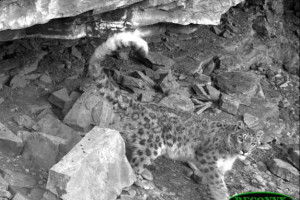
Panthera uncial (Snow leopard)
| Common name | Snow leopard |
| Latin name | Panthera uncial Schreber 1775 |
| Local name | Barfani cheetah |
| IUCN/WPA/Indian status | Endangered/I/Uncommon |
| Social unit | Solitary, although overlap of home ranges of males with other males and with females have both been recorded. |
| Size / weight | HBL: 86-125 cm. TL : 80-105 cm. WT : 45-55 kg(males) 35-40 kg ( females) |
| Description | One of the most aptly named animals, the Snow leopard is adapted completely to live in snow covered areas. It is marginally smaller then the common leopard, with a more luxuriant coat. It has back spots on its limbs and face and its pale smoky grey coat with ghostly dark grey rosettes , allow for excellent camouflage. The ears are short and round , and the back of ears have black edges and are pale. The snow leopard’s limbs are long and muscular , the chest is deep and the paws are massive in comparison to its body, all of which help to fell the large prey that it often needs to hunt. |
| Behavior | Despite being a large carnivore, the harsh terrain and climate that it lives in forces the snow leopard to have a wide dietary range including rodents birds and wild goats. It kills every 10-15 days and it has been estimated to have a large prey consumption of approximately 20-30 adult Bharal annually. During the lean season small alpine mammals such as marmots pikas and hare comprise a fair share of its diet. |
| Distribution | Through the high Himalayas from Jammu & Kashmir to Arunachal Pradesh and trans Himalayas of Ladakh, Lahaul –Spiti, Gangotri and Tso Lhamo.Its range approximates the geographical range of its large prey the Bharal and the Ibex. |
| Habitat | Alpine as well as subalpine and scrub above the tree line. It favours lightly forested and steep terrain with rocky, broken country(1800-5800 m). Prefers areas with proximity to cliffs. |
| Best seen | Hemis NP, Ladakh, Jammu & Kashmir |





